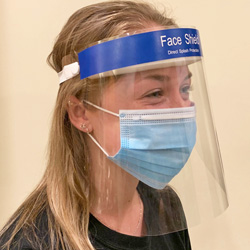
Check out Safety Emporium for your N95, N99, and face shield needs.
From: Ralph Stuart <rstuartcih**At_Symbol_Here**me.com>
Subject: Re: [DCHAS-L] Concern about one of today's incident reports
Date: Wed, 22 Apr 2015 09:40:46 -0400
Reply-To: DCHAS-L <DCHAS-L**At_Symbol_Here**MED.CORNELL.EDU>
Message-ID: D035F1B4-ACC1-4CAB-9030-6FFB499D341E**At_Symbol_Here**me.com
In-Reply-To <4759C02EA3685D4AB7DF8B5A694A924E8B8669FE**At_Symbol_Here**ECS-EXG-P-MB05.win.lanl.gov>
>Does this strike anyone else that this was overkill? I am all for caution and safety, but I am afraid we are not promoting either if every spill results in a full blown evacuation and HZMAT incident.
>
To add some context to this question, and in follow up to an off-line question from someone on the list, I did some quick work with the public data that ASTDR released last week. You may remember that the ASTDR reported that the educational industry was one of the top 5 sectors for chemical incidents.
Based on the data in the infographic at
http://cen.acs.org/articles/93/i16/Accident-Analysis.html , the number of evacuees per incident in the educational sector is almost 400; the next highest is 250 for chemical manufacturers. So although educational hazmat events have lower injury rates than chem manufacturers (although not gigantically lower: 7.6 people injured per incident in chemical manufacturing and 6.5 in education), events in education affect a lot more people. This makes sense based on the perceived vulnerability of the population.
Based on an educated guess by looking at the chemicals involved, it appears that 50% of the events report in the educational sector are related to laboratory chemicals and 20% to facility chemicals. The remaining 30% are mercury, which could come from any of three sources: 1) lab work, 2) facility equipment (e.g. mercury switches) or 3) a student bringing it in to share with their friends. I suspect the third is the most common.
I would note that the ASTDR data reports about 9 events per week in the educational sector (extrapolating from the states reporting in their survey to the country as a whole), which is more than I generally see in scanning google headlines (about 5/week, including global events), so they may have more access to data than is reported in the press.
- Ralph
Ralph Stuart
rstuartcih**At_Symbol_Here**me.com
Previous post | Top of Page | Next post
